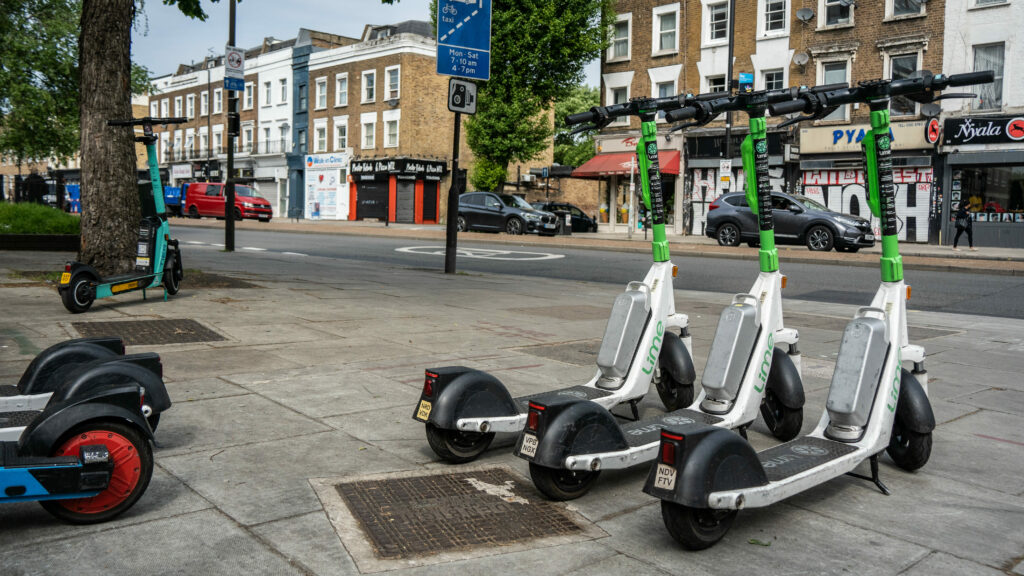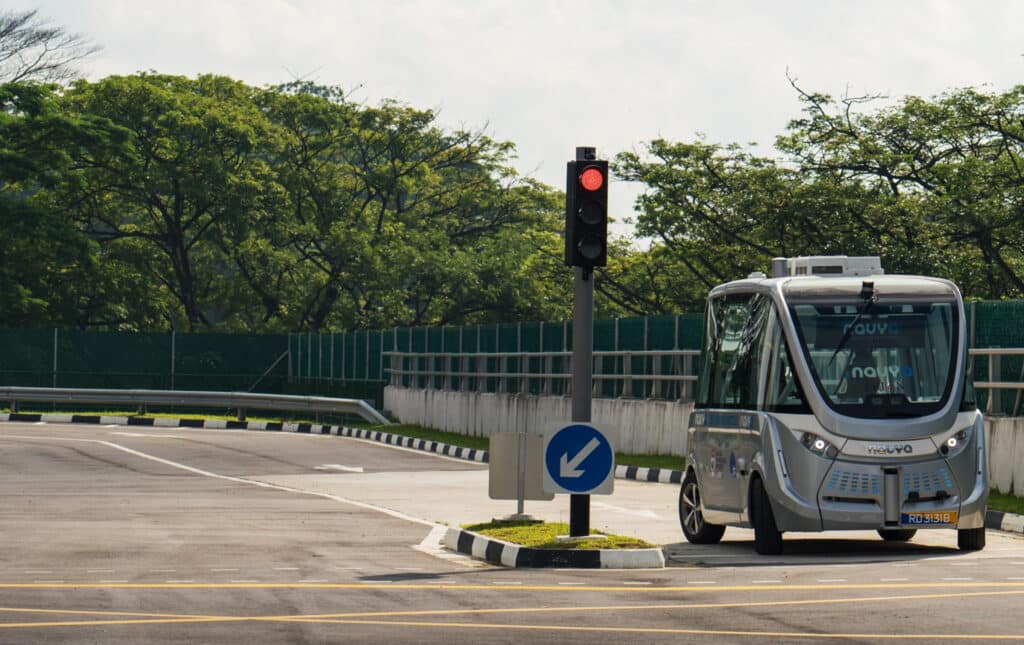The latest technological developments have revolutionised the world of mobility, with new modes of transport, new uses and new players. At SYSTRA, we help clients embrace the possibilities of new transport modes – from autonomous vehicles to demand-responsive transport – to develop future-focused transport networks that work for people and the environment.
Exploring the future of mobility and transport innovation
The emergence of new transport technologies and the push to decarbonise transport systems present a world of new possibilities for the future of transport in the UK. Local authorities and transport planners need to understand the opportunities and develop the right solutions, to ensure the best technologies and transport systems are deployed in the most effective ways for different communities and regions.
With so many new possibilities available, authorities face real challenges in knowing where to start, who to partner with, how to approach the market and how to deliver successful projects. The options available include micromobility modes of transport, autonomous and semi-autonomous vehicles, electric vehicles and other sustainable and accessible public transport. Different options need to be integrated intelligently and seamlessly to provide true end-to-end solutions for all travellers – combining active, social, private and public transport options.
SYSTRA is leading the way in research, design and innovation for new mobility solutions. Our new mobility specialists work closely with clients to deliver transport networks and mobility hubs that integrate the latest carbon-free technologies and transport modes within the wider transport ecosystem.
SYSTRA new mobility teams are engaged in developing innovative solutions in partnership with clients, helping to create comprehensive mobility networks adapted for tomorrow’s world.
New concepts in smart, sustainable transport
At SYSTRA we recognise that concepts of transport and expectations of transport are rapidly evolving. Customers require an integrated transport environment that not only provides a door-to-door solution, but one that is also convenient, inexpensive, sustainable, accessible and largely tailored to their specific needs.
SYSTRA can support local authorities and transport planners who face the challenge of reinventing smart transport solutions and infrastructure that provides a service, while stimulating carbon reductions, healthier travel options and economic prosperity.
Micromobility options for end-to-end journeys
User demand has brought about a number of new mobility options that help to enable complete end-to-end journeys. New micromobility options, such as e-scooters, e-bikes, and bike sharing, can help to fill in the gaps between existing fixed-route public transport service provision. They provide not only first-mile to last-mile options, but also promote the shift towards healthier, active and even social transport solutions. SYSTRA understands the role that new mobility options play, and also the need for smart digital infrastructure to help provide truly joined-up solutions.

Autonomous vehicles present new opportunities
The advancement of autonomous vehicles presents new opportunities and challenges for transport planners. The technologies available offer varying degrees of autonomy. These vehicles require updated road infrastructure and communications technology to support their safe operation, enabling communication between the vehicle and its environment. In the short to medium-term, most of these vehicles will require a driver to oversee the journey and take control when necessary. But the pace of technological change means that true driverless vehicles may soon be a realistic option.
Any local authorities putting together transport plans for the future should consider the possibilities of autonomous vehicles and the infrastructure and technologies required to support them. It’s likely that, over time, autonomous vehicles could provide on-demand transport services in more rural areas, filling a gap that traditional fixed-route services struggle to fill. In urban areas, autonomous vehicles could be used to provide delivery services, transporting goods to shops and offices. There are many other possibilties for autonomous vehicles, which could provide sustainable and environmentally friendly services to different communities.

search, planning and design for integrated solutions
The integration of micromobility options, demand-responsive transport (DRT), autonomous vehicles and other new mobilty solutions into local neighbourhoods and regions requires careful planning, a clear understanding of people’s movements, and an analysis of the gaps in existing services.
SYSTRA has the multi-disciplinary expertise required to complete this research, analysis and planning – helping clients to develop comprehensive new-mobility plans. These plans will take into account origin/destination modelling, user needs, traditional service availability and how those services need to be integrated and potentially changed to provide the optimum joined-up solution.
Emerging mobility technologies
While micromobility modes are currently the most prevalent form of new mobility on the high street, newer mobilities are now making an appearance. Some autonomous vehicle services are already in operation, particularly around airports and other transport interchanges. Further developments in autonomous vehicles are underway, alongside advances in electric Vertical Take Off and Landing (eVTOL) planes, which could be both piloted and automated.
There are also new concepts in mass transit, such as suspended rail systems, cable cars, trackless tram systems and even hyperloop systems – all offering exciting potential for the transport networks of the future.
Trusted partner for new mobility innovation
SYSTRA is the experienced, trusted partner that can support clients to fully understand the impact, benefits and implications of these new transport technologies and mobility options. We work closely with clients to help analyse the options available and determine the most appropriate solutions for each scenario – supporting the successful implementation of these demanding and sometimes controversial new mobility projects.
How can our experts help?

Find out what its like to work at SYSTRA, rewards, benefits and about different career pathways including apprenticeships and graduate opportunities.
 Australia
Australia  Brazil
Brazil  Canada
Canada  China
China  Denmark
Denmark  France
France  India
India  Indonesia
Indonesia  Ireland
Ireland  Italy
Italy  Malaysia
Malaysia  New Zealand
New Zealand  Norway
Norway  Poland
Poland  Saudi Arabia
Saudi Arabia  Singapore
Singapore  South Korea
South Korea  Sweden
Sweden  Taiwan
Taiwan  Thailand
Thailand  United States
United States  Vietnam
Vietnam